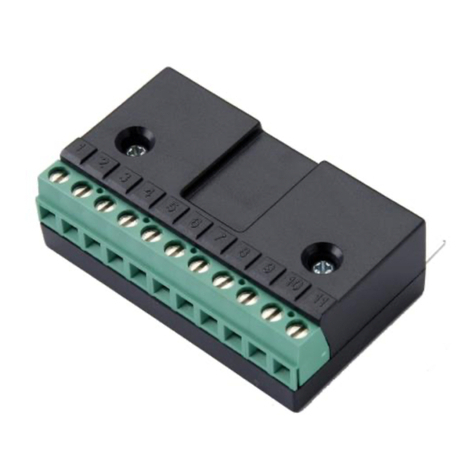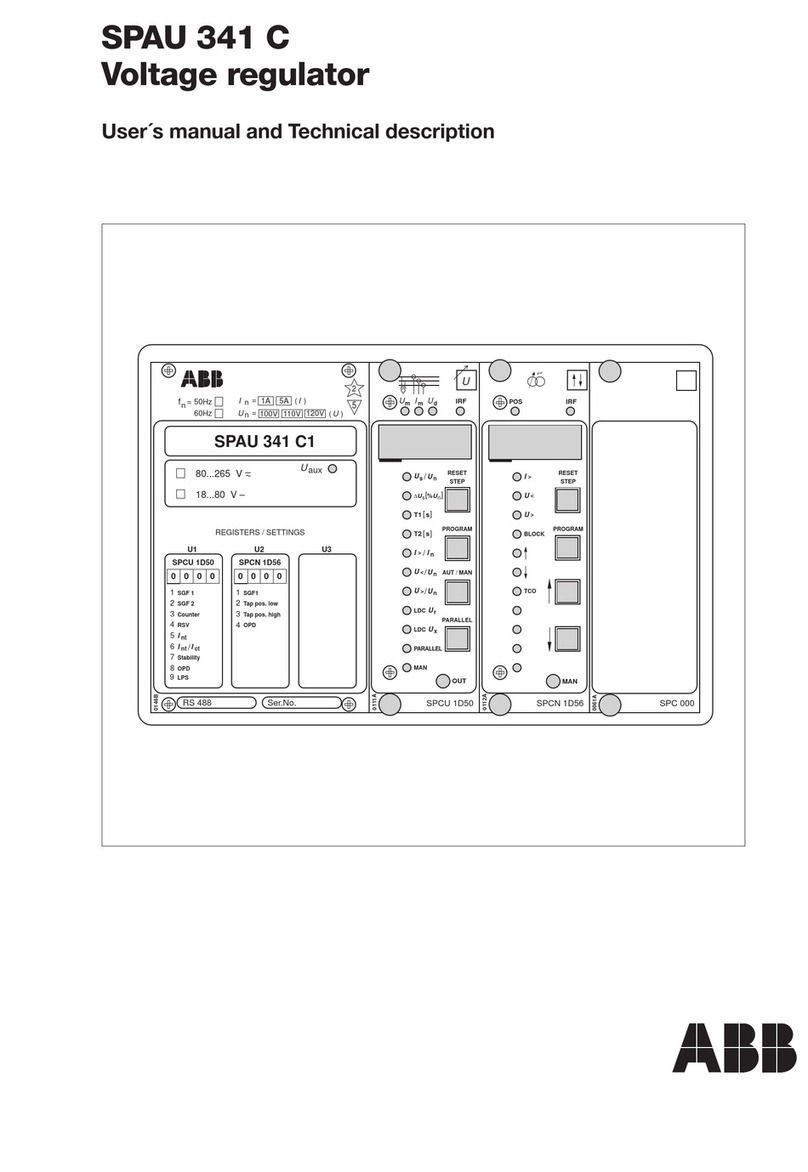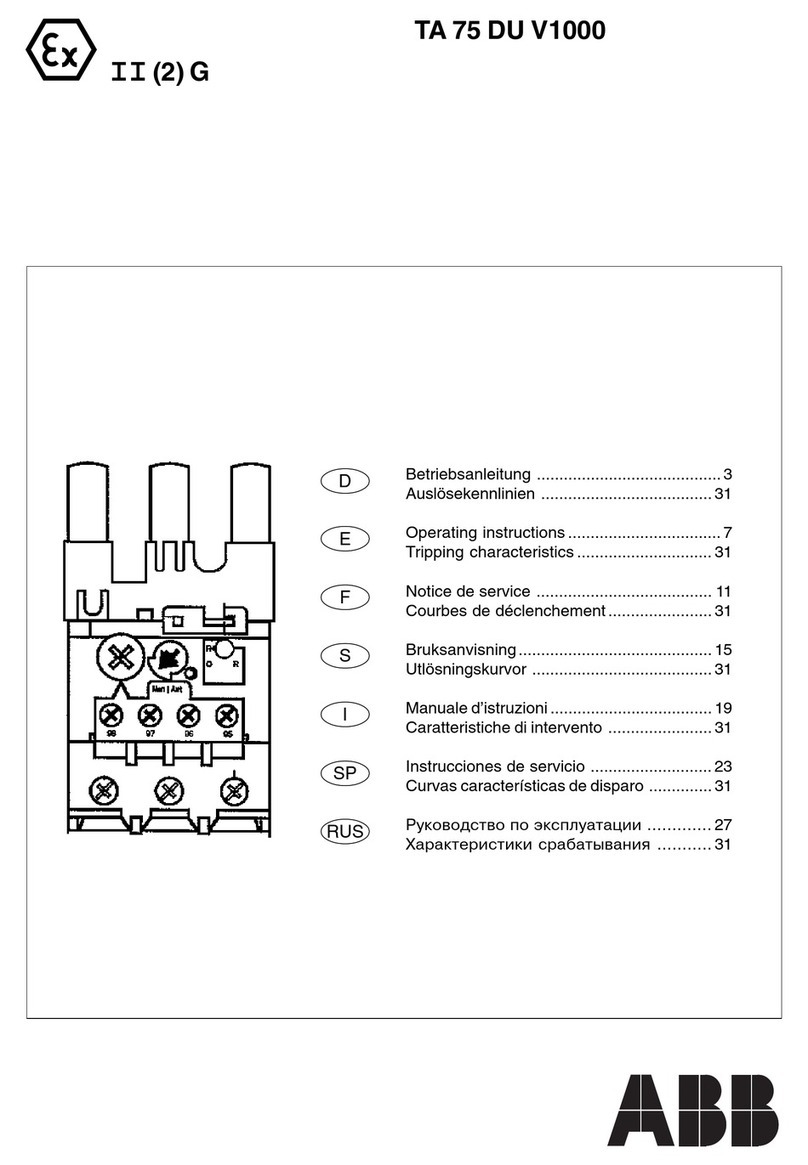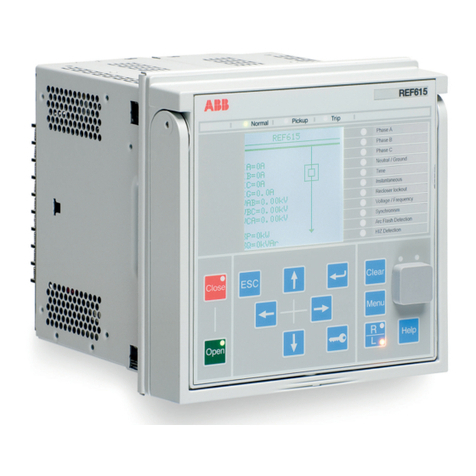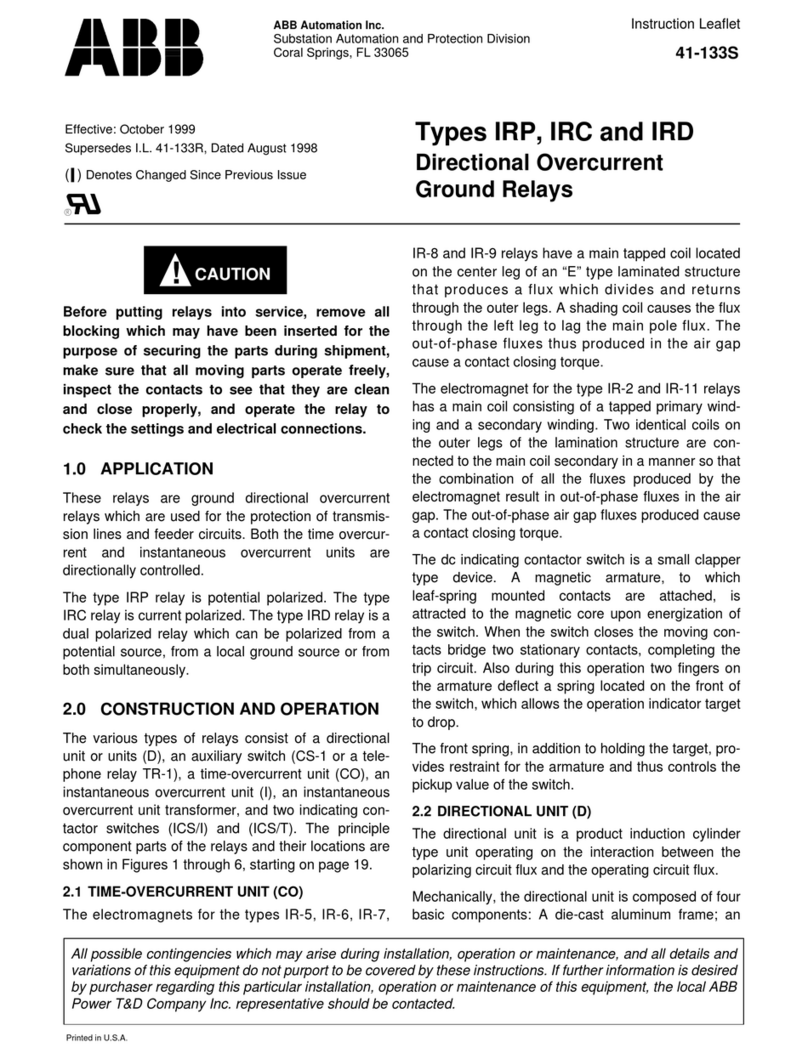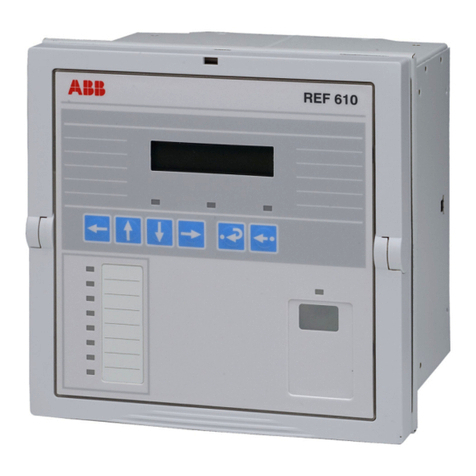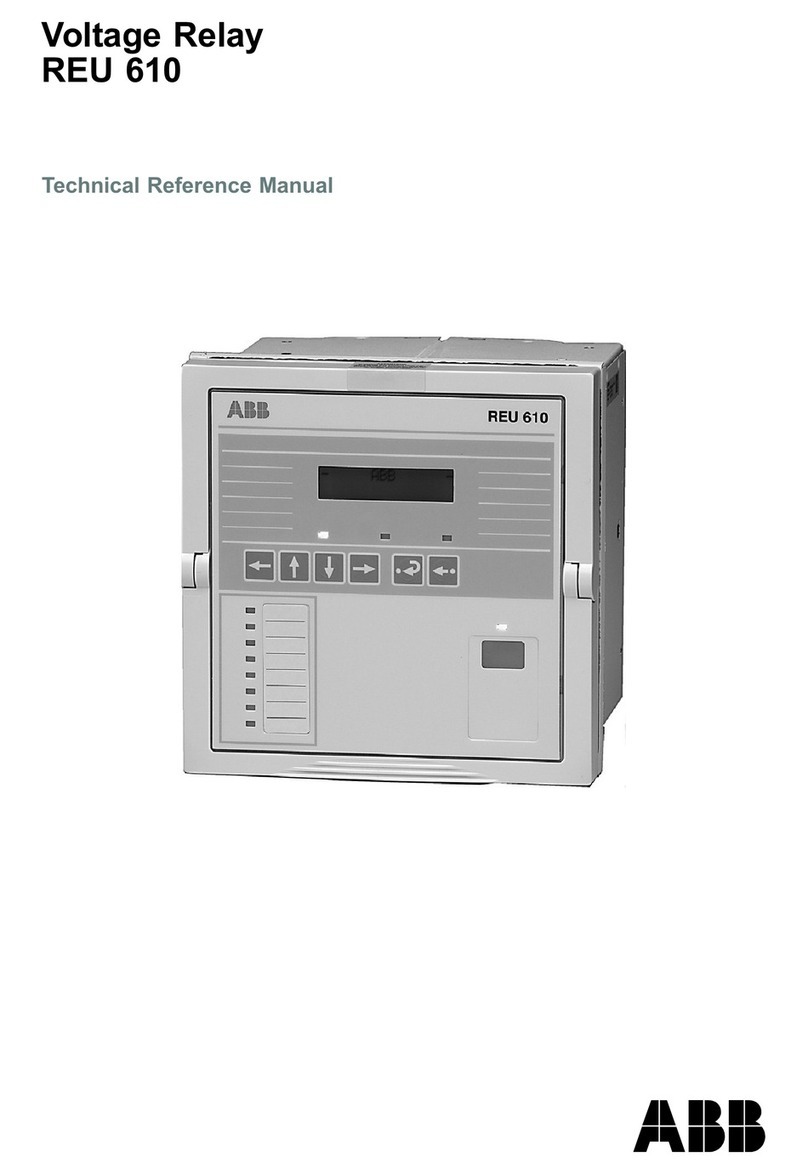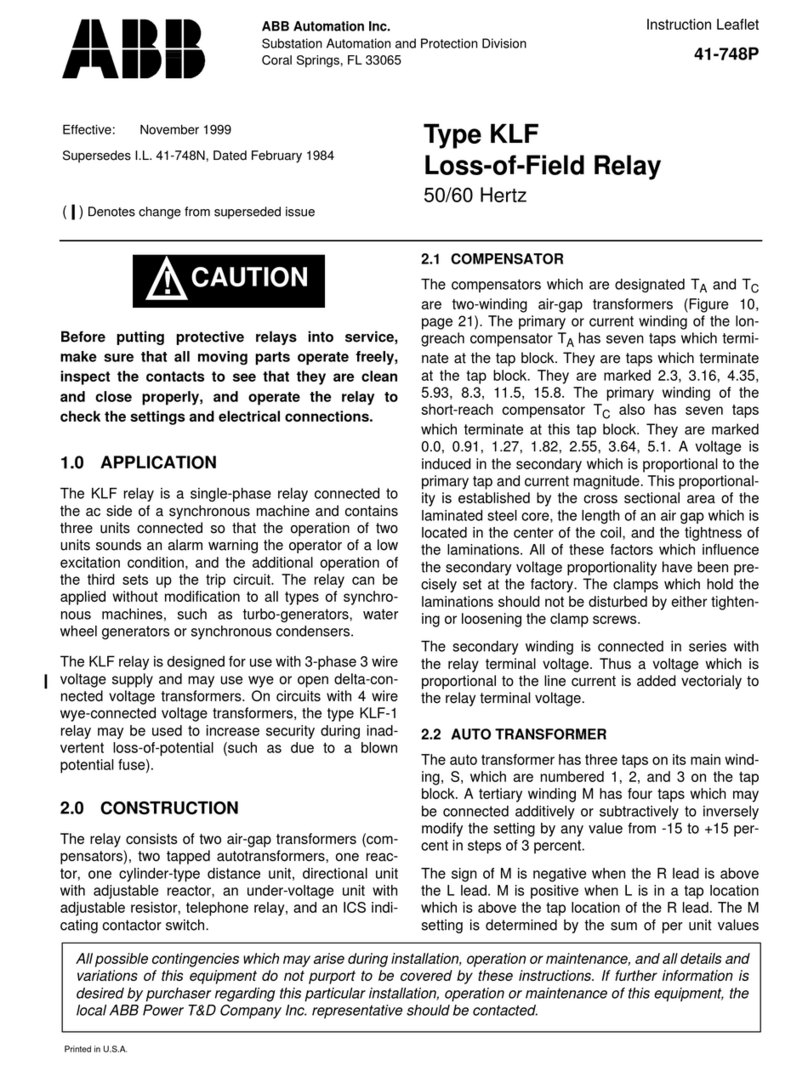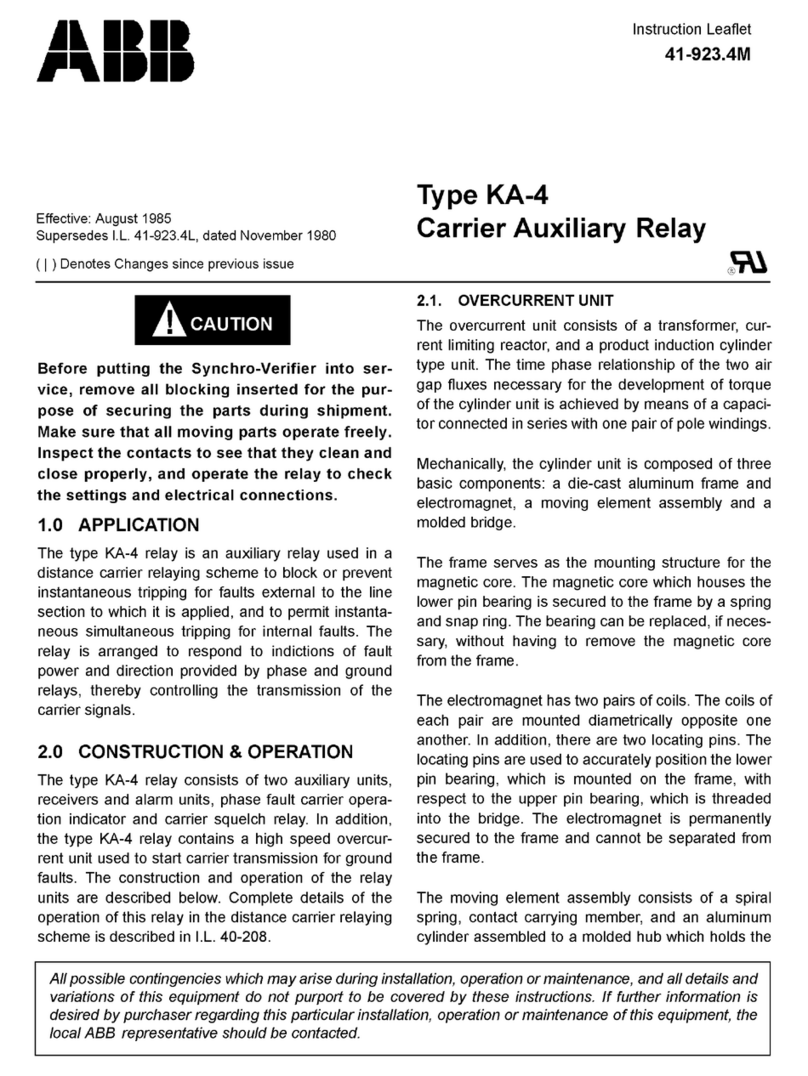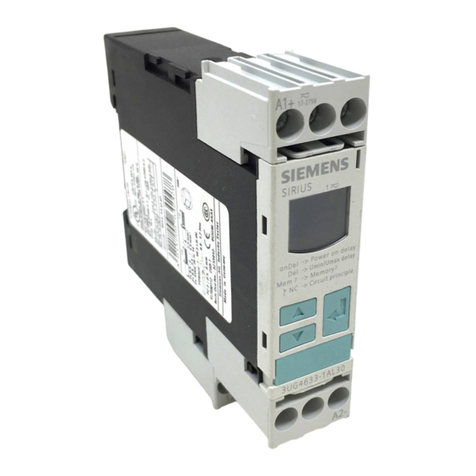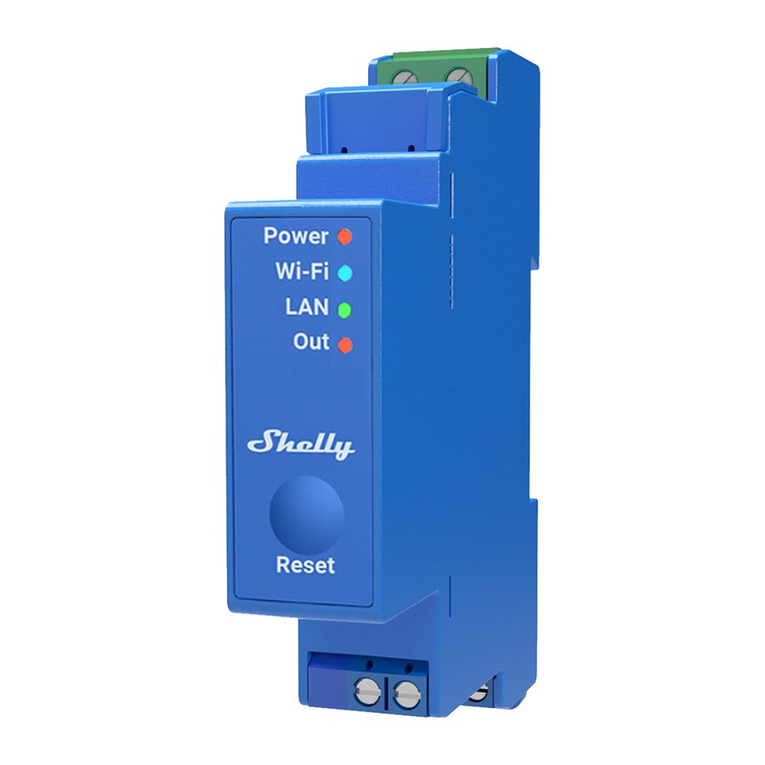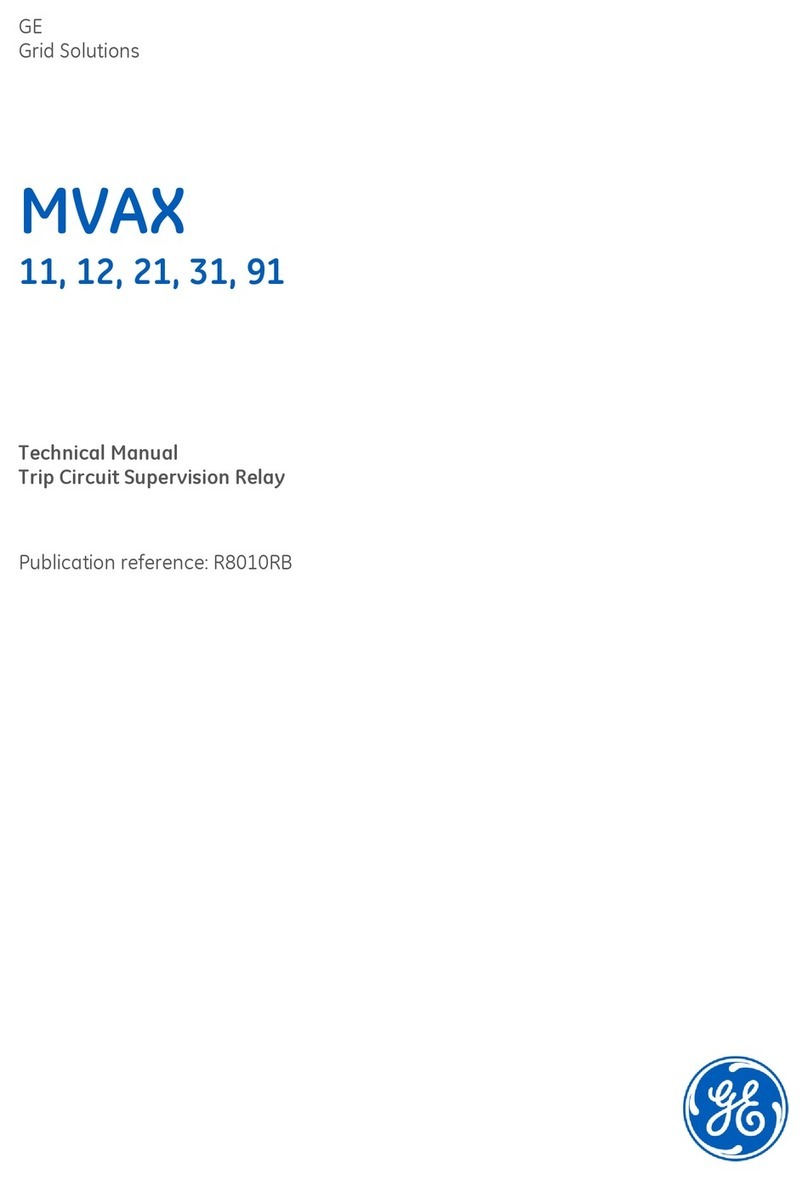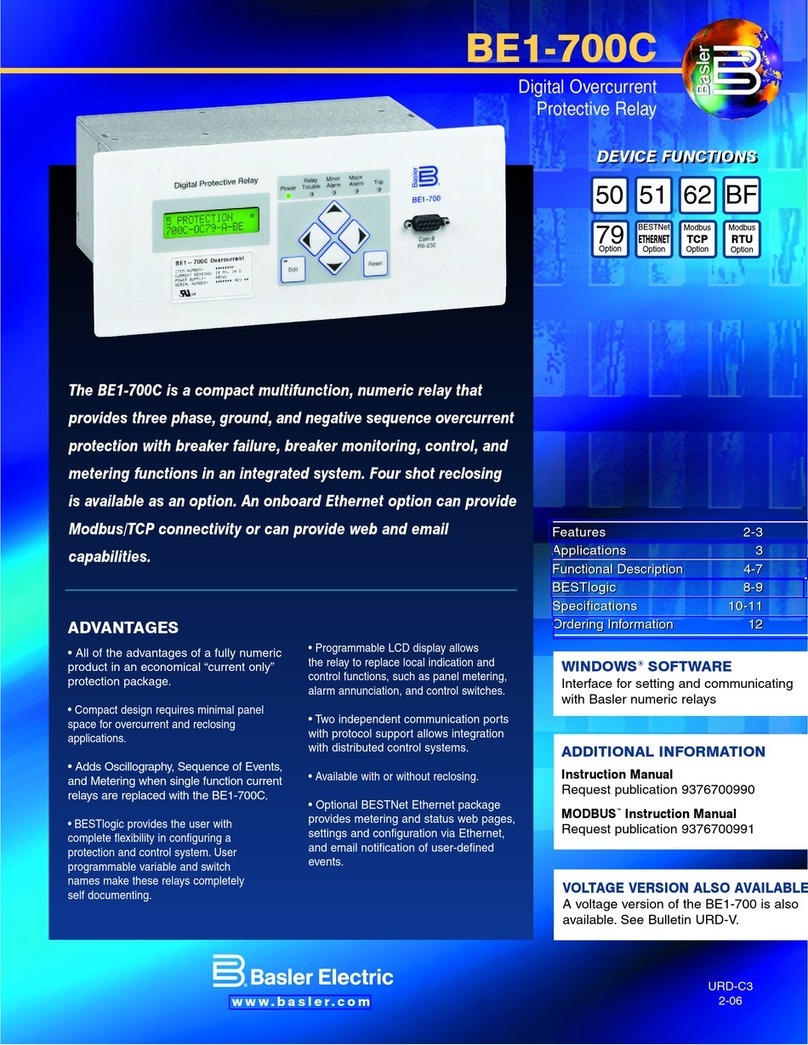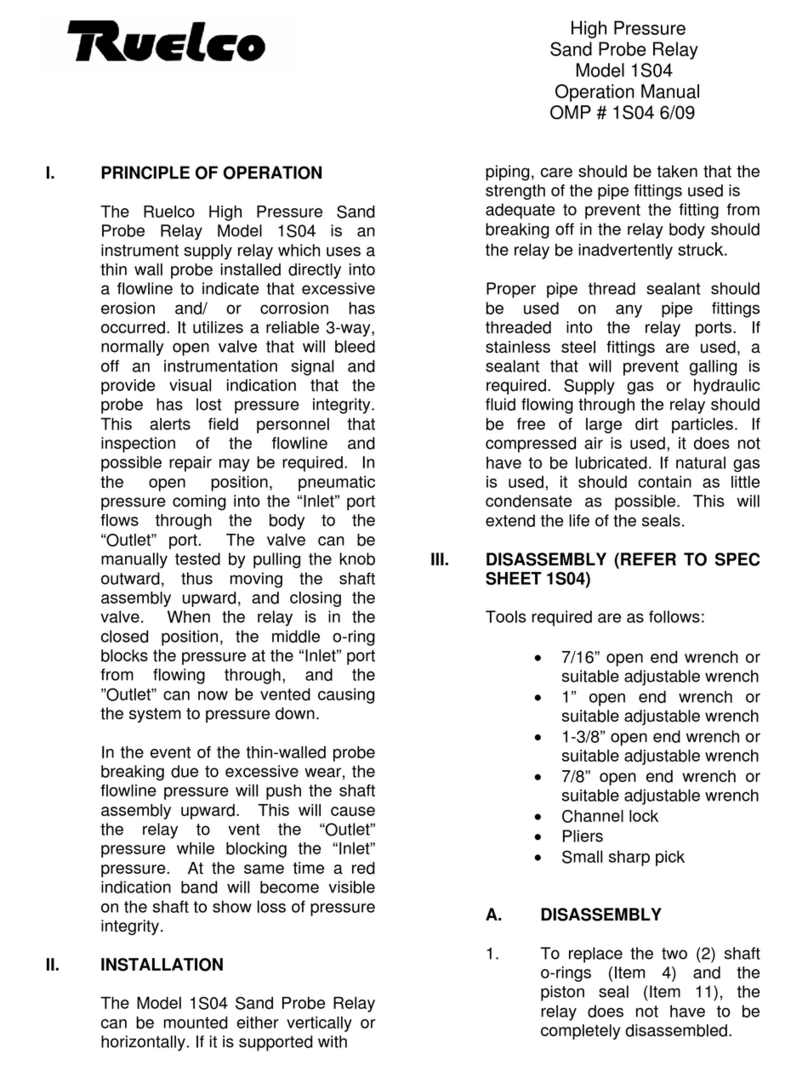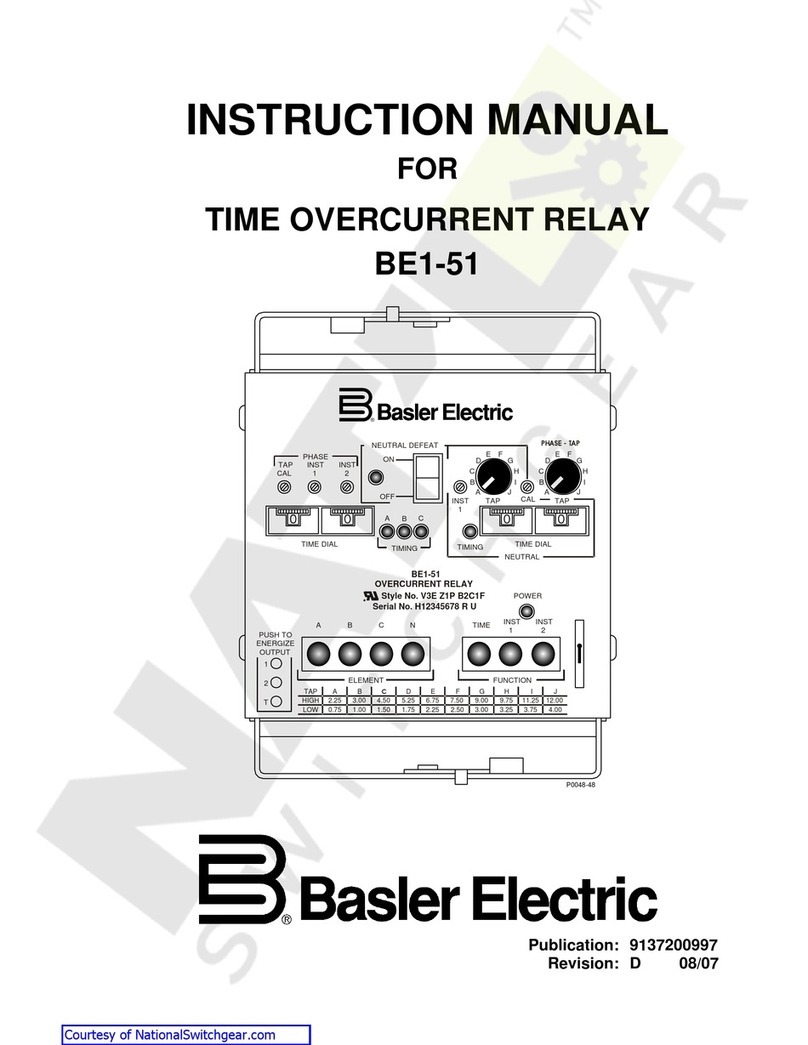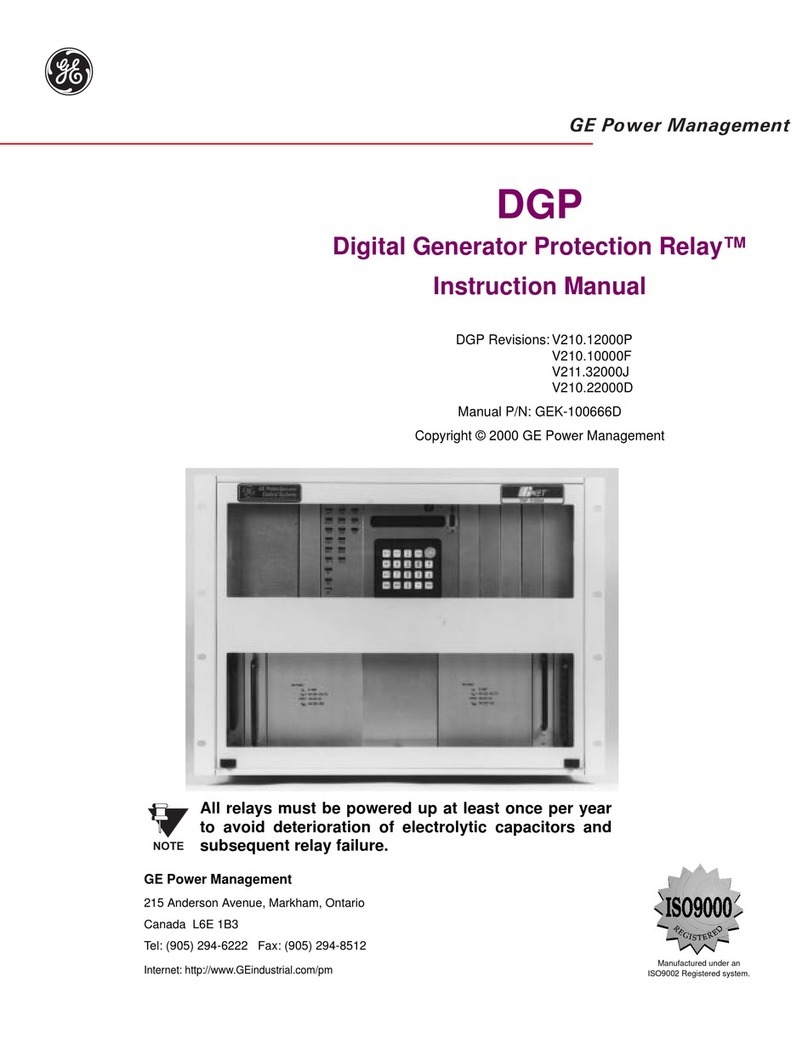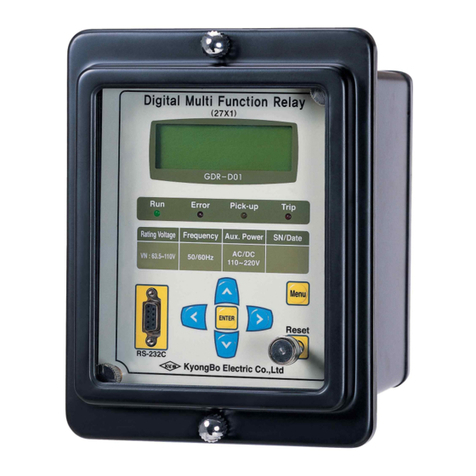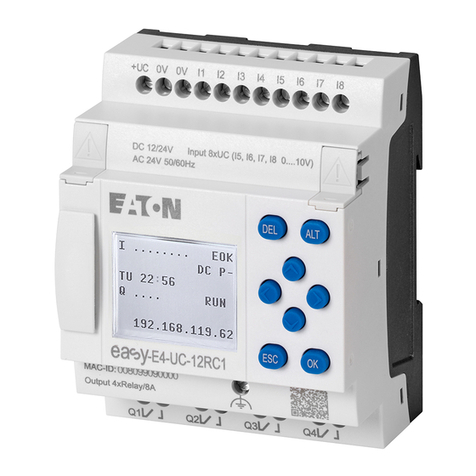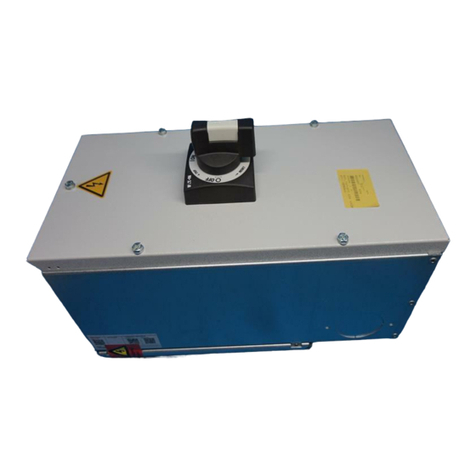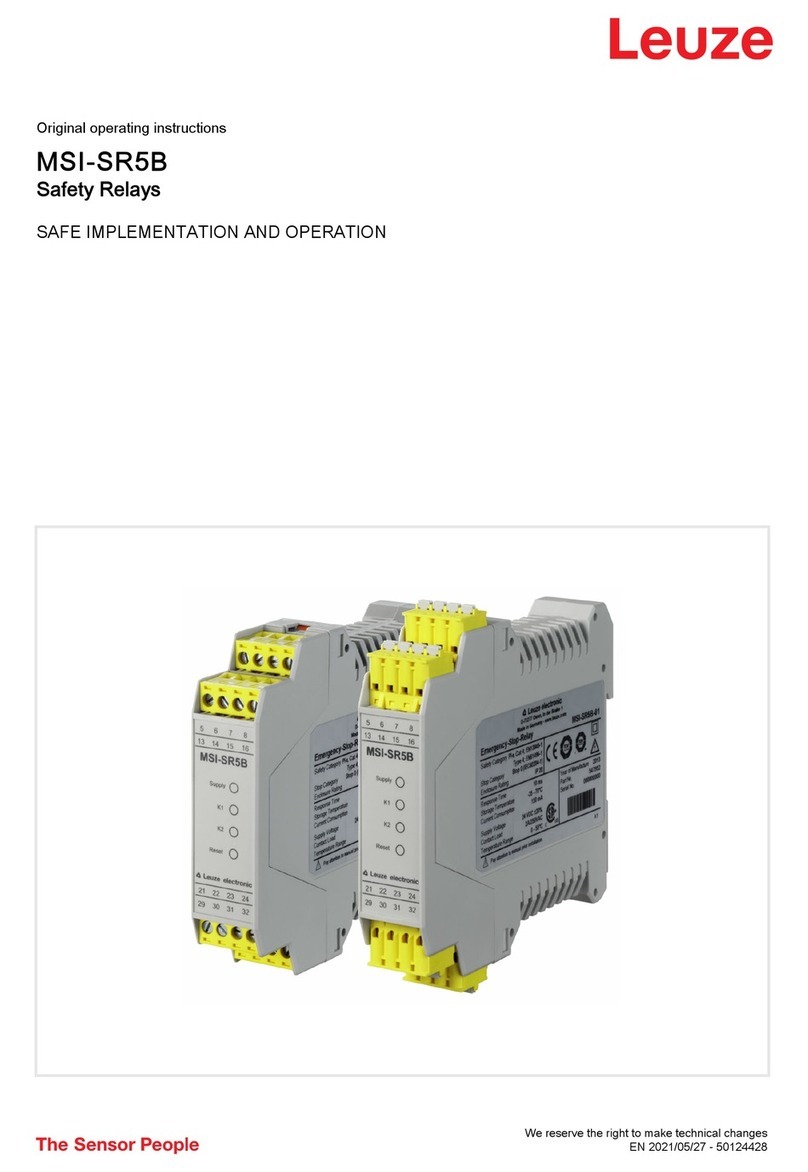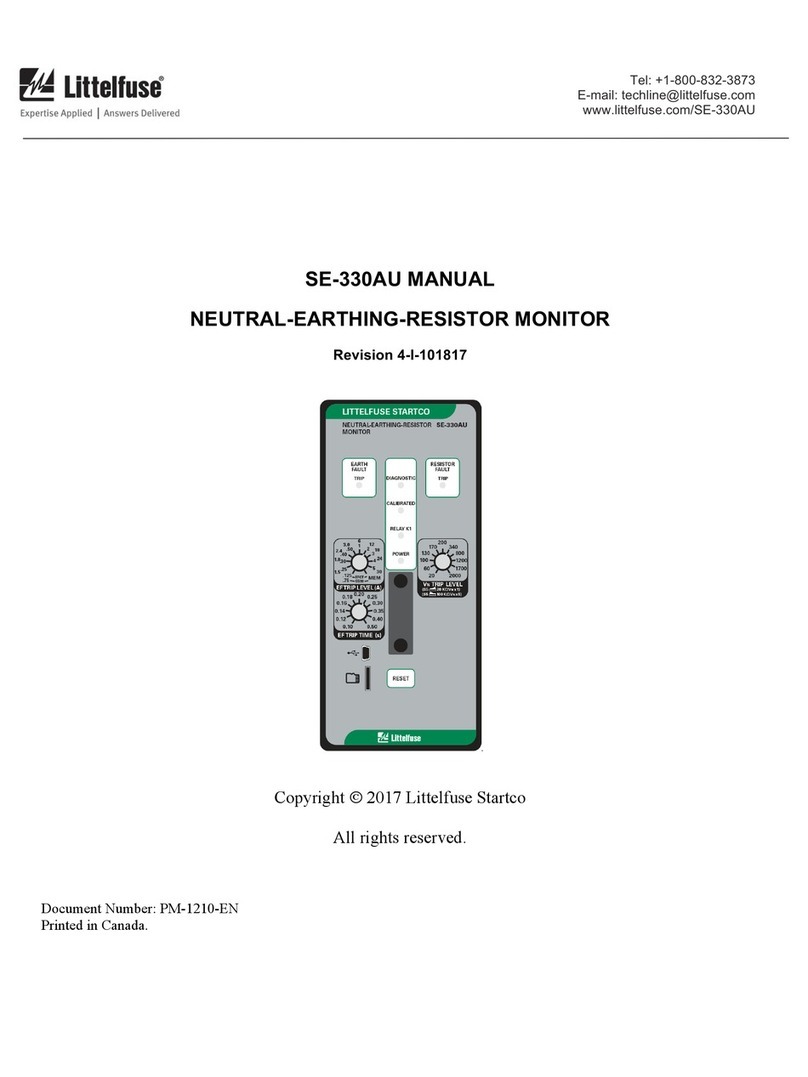
IL 41-753.1 N MG-6 Multi-Contact Auxiliary Relay
8ABB
contacts are approximately three times as strong as
the ones compressed by circuit-opening contacts and
thus they can be readily distinguished. The positions
of the two springs are reversed at the two ends of the
relay.
6.4.2 Special Purpose Contacts
When special contacts have been supplied for make-
before-break applications, all corresponding stationary
contacts must be bent equally toward their respective
moving contact to obtain “make” at the point where
the “break” moving contact has approximately a 1/16”
follow before parting from its stationary contact.
6.4.3 Coil Cutoff Contact
If the relay is provided with a coil interrupting contact,
the following points must be observed to assure
satisfactory operation. With the relay in its normal
operating position and the armature shifted to the
extreme right, align the armature “snap” spring so
that it is at least 1/64” in from the right hand edge of
the moving contact spring. With an 0.030 inch gap
between the armature and the lower pole face of the
electromagnet, adjust the bracket by means of the
adjusting screw until the snap spring just passes the
roller. The latch screw should be adjusted so that with
the armature in the latched position and the operating
coil de-energized the gap between the armature and
the lower pole face of the electromagnet is 0.010 to
0.015 inch. With the armature in this position the coil
interrupting contact should be open at least 3/64”.
6.4.4 Contact Cleaning
All contacts should be periodically cleaned. A contact
burnishing tool, Style # 182A836H01 is recommended
for this purpose. The use of abrasive material for
cleaning contacts is not recommended because of
the danger of embedding small particles in the face of
the soft silver and therefore impairing the contact.
6.5 LATCH ASSEMBLIES
On latching type relays the latch screw is adjusted
so that with the armature closed and the operating
coil de-energized there will be a gap of 0.020 ±0.005
inches between the electromagnet pole face and the
raised section of the armature striking the pole face.
Following this adjustment, tighten the locking screw
securely.
There is a small amount of clearance between the
armature and its supporting posts and in order to
insure proper operation, allowance must be made for
this in the following manner. With the armature held
against its left hand support and nearly closed, the
latch spring or reset armature should be moved to the
left as far as it will go by means of the hand reset.
To assure that the latch will always release the
armature, the resulting space between the latch and
the latch screw should be at least 0.010 inch, and
should not be more than 1/64 inch. This should also
be checked electrically if electrical reset is provided.
Some change of this gap can be made by loosening
the mounting screws in the relay base and moving
the latch support in the desired direction. The gap
can also be changed by loosening the two screws
which hold the moving contact insulation block to
the armature and shifting the armature in the desired
direction.
On electrical reset relays, the tension of the spring
which draws the reset armature toward the latch
screw must be adjusted if these parts are being
reassembled. The locking screw (Figure 2) is screwed
out until its head clears the head of the adjusting
screw. The main armature is then held completely
closed and against its right hand support and the latch
spring tension adjusting screw is turned until the latch
barely touches the stop projecting from the center of
the latch screw. Then, the latch spring tension should
be increased by turning the screw clockwise until it
just stops (approximately 9 turns). Finally, the locking
screw should be tightened.
Note:Care mustbetakennot toovertightenthespring
tension adjusting screw or the tension spring will be
damaged.
If either the core nut of the electrical reset assembly
or the screws which mount its armature have been
loosened, the relative positions of the core and the
plunger may shift sufciently to cause the plunger
to strike on the side of the conical core opening. To
assure correct alignment of these parts, 0.042 inch
diameter holes are provided through the center of the
core and about 1/16 inch deep in the center of the
plunger. After tightening the core nut a close tting
pin should be inserted through the core and into
the plunger. With the pin in place and the plunger
pressed rmly against the core and the mounting
end of the armature centrally located with respect
to the electromagnet, the two armature mounting
screws should be tightened. The pin should then be
removed.
A small amount of silicone oil is applied at the factory
to the polished and hardened surfaces of the latch

